The History of Hebrew in Israel
Modern Hebrew is a Semitic language and one belongs to the Afro-Asiatic language family. The origins of Modern Hebrew are actually in the Torah, which is believed to have originated during the First Millennium B.C. and includes so-called Old Hebrew, a precursor to Modern Hebrew.
For a long time, Old Hebrew was the liturgical and official language of the Jews and was in competition with Aramaic, which exerted a great influence on Old Hebrew. Early on, numerous scientific, poetic, philosophical, and liturgical texts were written in Old Hebrew, which have been preserved in that form to this day.
Instant quote
The Revival of Hebrew
In the late 19th century, the Hebrew language underwent a renaissance. Expanding from Jerusalem outward, Jews around the world began to revive their ancient language. The goal was to reform Hebrew, which had only been used in synagogues for centuries. They wanted to modernize and develop it into a language suitable for everyday use. Thus, Modern Hebrew began to take shape.
Modern Hebrew is also called Ivrit. It’s the revival of the language of the Torah that happened under the influence of enlightened Zionism, so it was also strongly influenced by modern European languages. As a result, there are many ancient Hebrew forms and phrases that are still taught in schools and used in the liturgy today, but which don’t play a role in the everyday use of Modern Hebrew.
Instant quoteIvrit is considered to be the language of Moses, a sacred language that was successfully transformed into an everyday standard language through linguistic efforts. Thus, Modern Hebrew preserves the traditional Semitic phonetics only in its orthography, but differs significantly in its modern pronunciation from the other Semitic languages.
Our translators know the intricacies of Ivrit and translate your documents quickly and accurately so that they’re faithful to your original document.
Ivrit
Hebrew script is both the alphabet of the Talmud and that of today's modern Israeli media. It’s based on the Hebrew book face type that had been developed in the second century CE (AD) by rabbis for the preparation of canonical texts. It’s written and read from right to left.
In Hebrew writing, there’s no distinction between uppercase and lowercase letters. However, in Modern Hebrew, numbers are now written as Arabic numerals.
Five million people worldwide speak Modern Hebrew, Ivrit, as a native language. It’s the official language of the State of Israel (in addition to Arabic).
We would be happy to convince you of our expertise in Hebrew. Send us your text by email or using the convenient form on our website. We’ll send back a no-obligation quote for your project, usually within an hour. You can entrust even difficult translation projects to us!
| Schweiz | Die Geschichte der hebräischen Sprache |
| Österreich | Die Geschichte der hebräischen Sprache |
| Deutschland | Die Geschichte der hebräischen Sprache |
| United States | The History of the Hebrew Language |